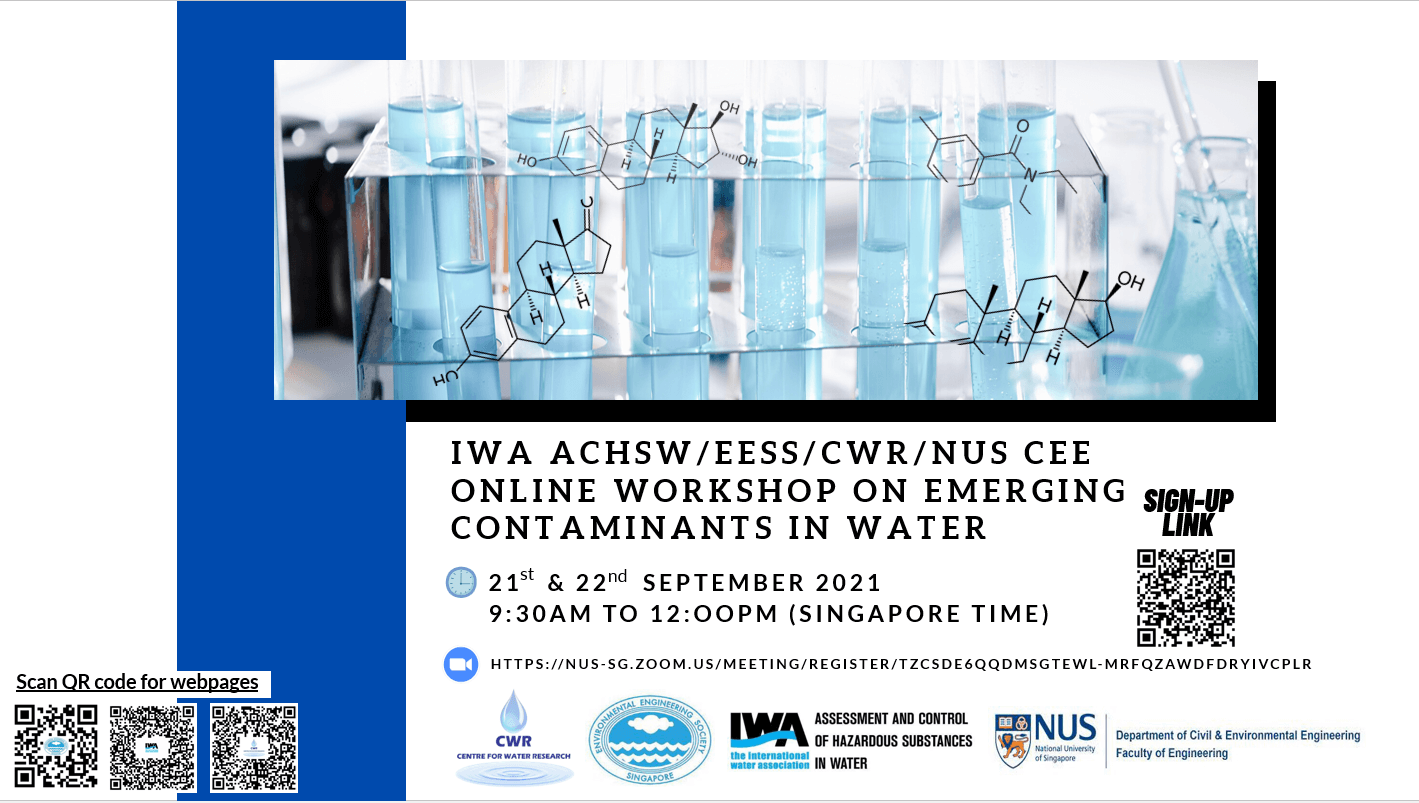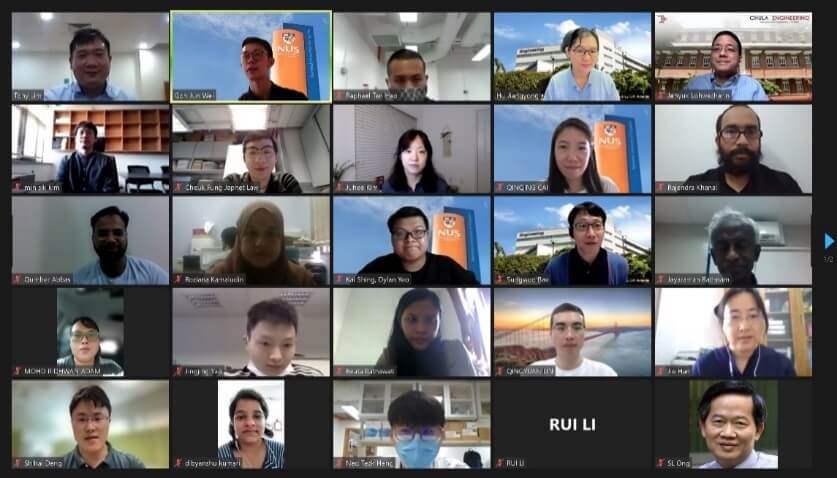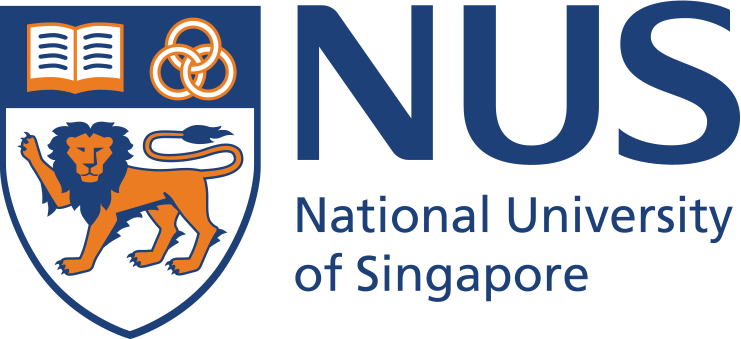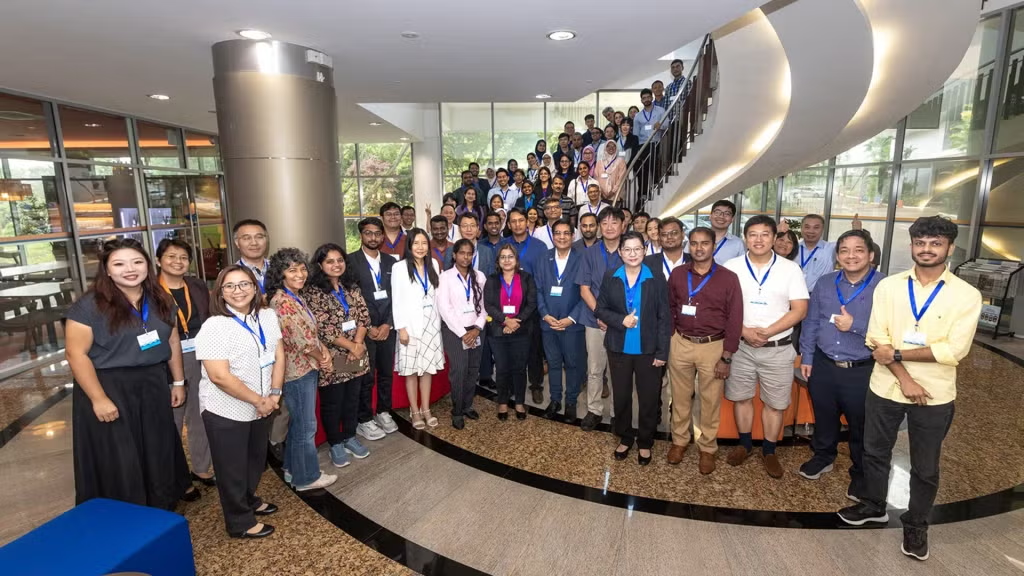The IWA ACHSW/EESS/CWR online workshop on Emerging Contaminants in Water was co-organized by International Water Association (IWA) Assessment and Control of Hazardous Substances in Water (ACHSW), Environmental Engineering Society of Singapore (EESS), Centre of Water Research (CWR) at Department of Civil and Environmental Engineering, National University of Singapore (NUS).

The workshop serves as a platform for academics to conglomerate and share their research findings and direction in the niche area of emerging contaminants in water. The workshop span over two days with two distinct sessions being Occurrence, Monitoring and Toxicity of Micropollutants and Removal of Micropollutants from Water/Wastewater which were moderated by Dr Rajendra Khanal (Policy Research Institute, Nepal) and Dr Lim Fang Yee (NUS), respectively. The workshop attracted 148 participants from Singapore, USA, Mexico, China, Nepal, Malaysia, Korea, Hong Kong and Thailand.
The opening session was addressed by Prof Hu Jiangyong, Chair of IWA ACHSW Specialist Group Management Committee, President of Environmental Engineering Society of Singapore and Director of Centre for Water Research, NUS. Prof Hu welcomed all the participants and encouraged all participants to exchange and share their knowledge. On the first plenary session, it opens the two-day workshop by pinpointing the prevalence and the gravity of the issue regarding micro-pollutants in our environment especially in the water bodies. Asst Prof Bae (NUS) kicked off the workshop with a keynote speech. He presented “Ecotoxicogenomic and metabolomic approaches to unravel toxicity mechanisms of emerging contaminants in environmental water”. After that, it was highlighted by both Asst Prof Pabel Cervantes-Avilés (Cervantes-Avilés, Tecnologico de Monterrey, Mexico) and Asst Prof Qumber Abbas (Xi’an Jiaotong University, China) that the prevailing usage of metal nanoparticles in automotive, catalysts, electronics, paints & coating and personal care products is leaving traces in our wastewater treatment plants and water bodies. Their toxicity is of real concern. Another emerging contaminant which is chemical based like antibiotics, endocrine disrupting compounds (EDCs) and pharmaceuticals and personal care products (PPCPs) was shared by both Dr Yan Huang (Singapore’s National Water Agency, PUB) and Dr Rajendra Khanal (Policy Research Institute, Nepal). Their prevalence in wastewater treatment plant is not the one that the stakeholders can simply ignore. The plenary session was comprehensive in highlighting the various categories of Contaminants of Emerging Concern (CECs) from micro-plastics, nanoparticles to chemical substances like PFAs, PPCPs etc, addressing why they are of great concern through the sharing of potential exposure routes, environmental transformation and fate and also the various advanced analytical methods to identify and quantify them. During the panel discussion, Assistant Prof Bae further explained the unravel toxicity mechanisms of emerging contaminants in environmental water. Assistant Prof Abbas also discussed the potential pathway of nanoparticles released from PPCPs.

For the second plenary session, the focus was on how to remove the micropollutants that were largely identified and highlighted the day before. Assistant Prof Jenyuk (Chulalongkorn University, Thailand) delivered an attractive keynote speech about the removal of microplastics from wastewater. After that, several processes were discussed by Dr Junhee Kim (Georgia Institute of Technology, US), Assistant Prof Min Sik Kim (Jeonbuk National University, Korea), Dr Law Cheuk Fung Japhet (Hong Kong Baptist University) and Dr Roziana Kamaludin (Universiti Teknologi Malaysia) ranging from photocatalytic to ozonation processes. The invited speakers shared their research findings like efficacy in removing CECs, the mechanism of the processes adopted, and the degradation pathways of the CECs used in their studies. The session proposed novel techniques and concepts on how to tackle this issue of contaminants of emerging concern in water bodies and wastewater treatment plants. During the panel discussion, Assistant Prof Jenyuk illustrated each treatment process in removing microplastics in wastewater. He showed a case study in Bangkok wastewater treatment facilities. He also shared his findings of seasonal effect on microplastic removal. Dr Law further clarified the importance of studying acesulfame, which is an artificial sweetener and has been used in wide range of food and drink. Although acesulfame is not toxic but its photodegradation behaviour and identity of its transformation products in critical.
In closing remark, Prof Hu, Chair of IWA ACHSW/EESS/CWR Workshop, thanked all the invited speakers, participants and committee members. The two-day workshop was conducted successfully with overwhelming response.





